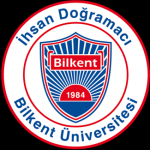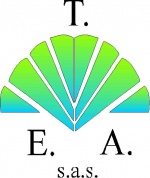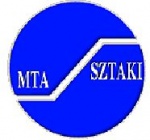Difference between revisions of "Background"
| Line 1: | Line 1: | ||
{| |
{| |
||
| + | |[[Image:Cube.jpg|150 px]] || |
||
| − | + | One important achievement of the Muscle group is the [http://muscle.ercim.eu/ Muscle Network of Excellence], partially funded by the European Commission (FP6-507752, 1 March 2004 - 29 February 2008), managed by ERCIM and coordinated by Eric Pauwels (CWI, NL) and Nozha Boujemaa (INRIA, F) |
|
|} |
|} |
||
| Line 6: | Line 7: | ||
{| |
{| |
||
| + | |[[Image:Silogo_rid.png|150 px]] || |
||
| − | + | The Signal & Images Lab at ISTI-CNR ([http://si.isti.cnr.it/ SI Lab]) is working in the fields of signal processing, image understanding and artificial vision. Sensorial information is increasing its importance in both our everyday lives and the most advanced technological and scientific contexts. In particular, visual and audio information is becoming the most significant part of the global information to be processed, understood and manipulated. Our general goal is to increase the knowledge in signal processing, image understanding and artificial vision. This will be achieved by studying and developing models, methods and machines for the formation, processing, analysis and recognition of images and signals, and by applying them to several areas of scientific and technological interest. |
|
|} |
|} |
||
| Line 13: | Line 15: | ||
{| |
{| |
||
| + | |[[Image:Logo-INRIA-science-en-couleur.png|150 px]] || |
||
| − | + | The AYIN project-team ([https://team.inria.fr/ayin/ Ayin]) is located at INRIA Sophia-Antipolis Méditerranée and aims to provide image processing tools to aid in the solution of problems arising in a wide range of concrete applications in Earth observation and cartography, for example cartographic updating, land management, and agriculture, while at the same time advancing the state of the art in the image processing methods used to construct those tools. An important recent theme, for example, is the incorporation of geometric information into stochastic and variational techniques, in the probabilistic case via the use of stochastic geometry, and in the variational case via the use of higher-order active contours. |
|
|} |
|} |
||
| Line 21: | Line 24: | ||
{| |
{| |
||
| + | |[[Image:TAU.PNG|150 px]] || |
||
| − | + | [http://www.eng.tau.ac.il/~nk/TAU-VISUAL.html TAU-VISUAL] at Tel Aviv University specializes in the extraction and processing of visual information from video and still images. The group has substantial expertise in the use of variational methods to solve fundamentally difficult problems, such as restoration, registration and segmentation of images and video. Typical application domains include medical image analysis, image retrieval, video analytics, environmental monitoring and 3D image acquisition. |
|
|} |
|} |
||
| Line 29: | Line 33: | ||
{| |
{| |
||
| + | |[[Image:Mozscreenshot.png|150 px]] || |
||
| − | + | Bilkent EE Signal Processing group is interested in multimedia signal processing topics including Image, Video, Speech, 3D signal processing issues. Specific research topics of the group includes; Human-Computer Interaction using vision and speech, Audio-Visual Multimedia Databases, Speech Processing, Digital Coding of Waveforms ( Image, Video, Speech, and Biomedical Signals), Adaptive Filtering and Adaptive Subband Coding, Wavelet Transform and Applications, Time Series Analysis and Stochastic Processes, Signal Processing for Food Safety and Color Image Dithering. The groups is currently involved in 2 EU projects: FIRESENSE and MIRACLE. |
|
|} |
|} |
||
| Line 36: | Line 41: | ||
{| |
{| |
||
|[[Image:Unige.4505.2008.10.450_logo_70.jpg|150 px]]|| |
|[[Image:Unige.4505.2008.10.450_logo_70.jpg|150 px]]|| |
||
| + | The Computer Vision and Multimedia Laboratory ([http://cvml.unige.ch CVML ]) of the University of Geneva is divided into three groups and carries out research in multimedia data processing, multimedia data management and security, as well as in multimodal human-machine interaction. Content-based Visual Indexing and Retrievalgroup: evelops strategies for the efficient indexing retrieval and exploration of large multimedia databases. Stochastic Information Processing group: studies various aspects of information theory and statistical (stochastic) information analysis and processing. Multimodal Interaction group: studiesvarious forms of interaction between humans, computers, and environment. Some considered interaction modalities are haptic, auditory, and based on physiological signals. Current developments concern: affective state determination and emotion recognition and their use for affective computing, multimodal interaction, brain-computer interfaces, mobility aids for sight handicapped people,object identification and authentication based on unclonable object features in large nonstructured databases, indexing and retrieval in very large multimedia databases, privacy preserving search, indexing and multiclass classification. |
||
| − | The Computer Vision and Multimedia Laboratory ([http://cvml.unige.ch CVML ]) of the University of Geneva is divided into three |
||
| − | groups and carries out research in multimedia data processing, |
||
| − | multimedia data management and security, as well as in multimodal |
||
| − | human-machine interaction. Content-based Visual Indexing and |
||
| − | Retrievalgroup: develops strategies for the efficient indexing retrieval |
||
| − | and exploration of large multimedia databases. Stochastic Information |
||
| − | Processing group: studies various aspects of information theory and |
||
| − | statistical (stochastic) information analysis and processing. Multimodal |
||
| − | Interaction group: studiesvarious forms of interaction between humans, |
||
| − | computers, and environment. Some considered interaction modalities are |
||
| − | haptic, auditory, and based on physiological signals. Current |
||
| − | developments concern: affective state determination and emotion |
||
| − | recognition and their use for affective computing, multimodal |
||
| − | interaction, brain-computer interfaces, mobility aids for sight |
||
| − | handicapped people,object identification and authentication based on |
||
| − | unclonable object features in large nonstructured databases, indexing |
||
| − | and retrieval in very large multimedia databases, privacy preserving |
||
| − | search, indexing and multiclass classification. |
||
|} |
|} |
||
| Line 59: | Line 47: | ||
{| |
{| |
||
|[[Image:TCD.png|150 px]]|| |
|[[Image:TCD.png|150 px]]|| |
||
| + | The School of Computer Science and Statistics in Trinity College Dublin has two collaborating groups, [http://gv2.cs.tcd.ie/ GV2] and [http://www.scss.tcd.ie/disciplines/statistics/statica/ Statica], that carries out activities on multimedia data (e.g. images, video and sound), sensor network data (e.g. road trafic, communications networks, camera network, motion capture) and environmental data (e.g. weather). STATICA focuses on Bayesian inference to solve statistical problems that arise in computer science, information systems and telecommunications focusing on developing statistical techniques to analyse large and complex data. GV2, the Graphics Vision and Visualisation group, has expertises in computer graphics, computer vision and all aspects of visual computing. GV2 was formed in 2006 with the integration of two longstanding TCD research groups: the Image Synthesis Group [ISG], established in 1993, and the Computer Vision and Robotics Group [CVRG], which was established 1983. |
||
| − | The School of Computer Science and Statistics in Trinity College Dublin has two collaborating groups, [http://gv2.cs.tcd.ie/ GV2] |
||
| − | and [http://www.scss.tcd.ie/disciplines/statistics/statica/ Statica], |
||
| − | that carries out activities on multimedia data (e.g. images, video and sound), |
||
| − | sensor network data (e.g. road trafic, communications networks, camera network, motion capture) and environmental data (e.g. weather). |
||
| − | STATICA focuses on Bayesian inference to solve statistical problems that arise in computer science, |
||
| − | information systems and telecommunications focusing on developing statistical techniques to analyse |
||
| − | large and complex data. GV2, the Graphics Vision and Visualisation group, has expertises in |
||
| − | computer graphics, computer vision and all aspects of visual computing. |
||
| − | GV2 was formed in 2006 with the integration of two longstanding TCD research groups: |
||
| − | the Image Synthesis Group [ISG], established in 1993, and the Computer Vision and Robotics Group [CVRG], which was established 1983. |
||
|} |
|} |
||
| Line 75: | Line 54: | ||
{| |
{| |
||
|[[Image:Cwi.PNG|150 px]]|| |
|[[Image:Cwi.PNG|150 px]]|| |
||
| + | The overall goal of the Signal and Images group at CWI is to understand and interpret multimedia data using mathematical tools, including stochastic geometric modelling, Monte Carlo methods, and statistical learning. Recent applications include object recognition and tracking, segmentation, prediction and detection of salient events, and content-based image retrieval. |
||
| − | The overall goal of the Signal and Images group at CWI |
||
| − | is to understand and interpret multimedia data using |
||
| − | mathematical tools, including stochastic geometric |
||
| − | modelling, Monte Carlo methods, and statistical learning. |
||
| − | Recent applications include object recognition and |
||
| − | tracking, segmentation, prediction and detection of |
||
| − | salient events, and content-based image retrieval. |
||
|} |
|} |
||
| Line 87: | Line 60: | ||
{| |
{| |
||
|[[Image:IbaI_Perner3.JPG|150 px]]|| |
|[[Image:IbaI_Perner3.JPG|150 px]]|| |
||
| − | The Institute of Computer Vision and Applied Computer Sciences (IBaI) was founded in 1995. The institute conducts basic and applied research in computer vision, data mining, machine learning, and for image databases. |
+ | The Institute of Computer Vision and Applied Computer Sciences (IBaI) was founded in 1995. The institute conducts basic and applied research in computer vision, data mining, machine learning, and for image databases. The institute has an excellent staff of highly-qualified researchers from various fields such as computer science, mathematics, electrical engineering, and physics. It has modern equipment and excellent facilities for conducting scientific research. The IBaI is involved in various national and international research projects and RTD projects. The institute is engaged in the developement of research themes such as Machine Learning and Data Mining in Pattern Recognition and Case-Based Reasoning in Computer Vision and Image Processing on the international level. Therefore the institute offers several scientific events such as MLDM, ICDM, MDA and technical committees. The institute provides courses(e.g. Tutorial Days Data Mining) on data mining and computer vision. |
| − | The institute has an excellent staff of highly-qualified researchers from various fields such as computer science, mathematics, electrical engineering, and physics. It has modern equipment and excellent facilities for conducting scientific research. |
||
| − | The IBaI is involved in various national and international research projects and RTD projects. The institute is engaged in the developement of research themes such as Machine Learning and Data Mining in Pattern Recognition and Case-Based Reasoning in Computer Vision and Image Processing on the international level. Therefore the institute offers several scientific events such as MLDM, ICDM, MDA and technical committees. |
||
| − | The institute provides courses(e.g. Tutorial Days Data Mining) on data mining and computer vision. |
||
|} |
|} |
||
| Line 103: | Line 73: | ||
{| |
{| |
||
| + | |[[Image:Logo-INRIA-science-en-couleur.png|150 px]] || |
||
| − | + | Texmex is a joint research group of IRISA and of INRIA, located in Rennes, France. It aims at developing techniques to facilitate the use or reuse of large collections of multimedia documents. The group focuses on the problem raised by very large-scale collection and on multimodal document analysis. The originality of our approach comes from the simultaneous consideration of the constraints dependent on the media and the documents and of the constraints related to the exploitation of these data, which are two aspects of the same problem. We develop multidisciplinary approaches based on media processing techniques (image, video, text, speech) and data analysis and management techniques (data analysis, machine learning, database management). |
|
|} |
|} |
||
| Line 110: | Line 81: | ||
{| |
{| |
||
| + | |[[Image:Logo-armines.jpg |150 px]] || |
||
| − | + | [http://cmm.ensmp.fr/index_eng.html ARMINES] is a non-profit French association which acts as the industrial interface serving engineering schools. CMM is a joint research laboratory of ARMINES and MINES ParisTech. Since the CMM was founded in 1967, it has contributed to the growth and dissemination of the theoretical and algorithmic corpus of mathematical morphology, through a very broad field of applications, thereby providing a rich experimental terrain for the development of new concepts and tools. For 40 years now, the CMM has been developing a powerful theoretical framework for image processing, called Mathematical Morphology. The CMM has acquired a leading position in the fields of mathematical foundations of the theory, efficient algorithms design, resolution of applications involving image processing, development of multimedia applications, and specific hardware development. The CMM has capitalized its expertise through common software libraries, creating a synergy between all applications in which the CMM is involved. These libraries provide advanced tools for filtering, segmentation, feature extraction, hyper-spectral image analysis and 3D point cloud analysis. |
|
contact : Beatriz.Marcotegui@mines-paristech.fr |
contact : Beatriz.Marcotegui@mines-paristech.fr |
||
| Line 119: | Line 91: | ||
{| |
{| |
||
| + | |[[Image:logoVIP.gif |150 px]] || |
||
| − | + | The research group [http://decsai.ugr.es/vip/ "Visual Information Processing"] consists of members of the [http://www.ugr.es/ University of Granada] and the [http://www.ujaen.es/ University of Jaén], from complementing fields as mathematics, statistics, computer science and physics, we carry out research on image restoration and enhancement, superresolution from compressed and uncompressed stills and video sequences, information retrieval from image and video databases, extraction of 3D information from video sequences for multimedia applications, tracking algorithms and optical flow, visual-statistical approach to multi-scale multiorientation representation models, computational photography, compressive sensing, active learning, fuzzy image processing, image classification and pattern recognition and multispectral image processing. |
|
|} |
|} |
||
| Line 126: | Line 99: | ||
{| |
{| |
||
| + | |[[Image:Logo_TSI.jpg |150 px]] || |
||
| − | + | The [http://www.tsi.gr/index.en.html Telecommunication Systems Institute] is a Greek-government- sponsored independent Research Institute founded by the Greek Ministry of Education in 1995. TSI operates under the auspices of the Technical University of Crete, as an administratively independent and financially self-sustained research entity. The Speech and Dialogue Group at TSI-TUC performs research in the areas of robust speech recognition, multimodal dialogue systems, child-machine interaction, speech understanding, language modelling and speech synthesis. The group has participated in large-scale speech recognition and spoken dialogue systems projects including “Logotypografia” the first large-vocabulary speech recognition system in Greek. The group has been involved in the EU-IST FP6 projects MUSCLE (multimedia understanding), HIWIRE (robust speech recognition) and is currently co-coordinating the EU-IST FP7 project PortDial (spoken dialogue systems). |
|
|}--> |
|}--> |
||
| Line 134: | Line 108: | ||
{| |
{| |
||
| + | |[[Image:Logo_UTIA.jpg |150 px]] || |
||
| − | + | The Pattern Recognition department of the Institute of Information Theory and Automation of the Academy of Sciences of the Czech Republic is a basic research unit oriented to statistical model-based pattern recognition and computer vision areas. The department has achieved leading position in several areas of statistical pattern recognition, mainly in the physically correct modelling and recognition of visual surface properties and feature selection. The PR department consists of 12 staff members and 6 doctoral students. The department head is [http://ro.utia.cas.cz/?q=people/michal-haindl Prof. Ing. Haindl Michal, DrSc.] |
|
|} |
|} |
||
| Line 142: | Line 117: | ||
{| |
{| |
||
| + | |[[Image:Logo_SZTAKI.jpg |150 px]] || |
||
| − | + | Distributed Events Analysis Research Laboratory of MTA SZTAKI aims to interpret and organize information coming from distributed or embedded sensors. The sensor can be a dynamic or static imaging device, other multimedia sources, or a network of different sensors. The challenge is the evaluation, recognition and classification of events occurring at different locations or time. We place special emphasis on machine learning, data mining, human perception, geometrical optics, optimization methods and variational analysis. Our areas of interests include image and video processing, biometrical identification, connections with sensor networks and computer graphics. |
|
|} |
|} |
||
| Line 150: | Line 126: | ||
{| |
{| |
||
| + | |[[Image:Logo_VTT.jpg |150 px]] || |
||
| − | + | [http://www.vtt.fi VTT], Technical Research Centre of Finland, is the biggest multi-technological applied research organisation in Northern Europe. With its staff of 3,100, its unique research facilities and extensive global co-operation networks, it provides leading-edge technology solutions and innovation services. VTT works to enhance its customers’ competitiveness and competence, creating the prerequisites for society’s sustainable development, employment and wellbeing. Augmented Reality (AR) is the technique of superimposing virtual objects in the user's view of the real world, providing a novel visualisation technology for a wide range of application. The [http://www.vtt.fi/multmedia Augmented Reality research group] consists of two teams: 3D Tracking and Mixed Reality. Teams started working in the AR field in 2000 with the development of virtual advertisements for live TV broadcast. In the following years teams expanded their expertise to several application areas in ICT, media, industry and building & construction. The augmented reality research group has strong scientific competence and has participated in a number of EU projects relating the area, for example INMOVE, CADPIPE, MUSCLE NoE, INTUITION NoE, and the ongoing ITEA2 project ViCoMo. |
|
|} |
|} |
||
{| |
{| |
||
| + | |[[Image:Logo_AARIT.jpg |150 px]] || |
||
| − | + | [http://www.aarit.at/ AARIT] (Austrian Association for Research in IT) is Austria’s platform for IT-related research. AARIT’s members include universities, research institutes, industrial research labs as well as single researchers. AARIT represents Austria’s IT-related research in ERCIM, the European Consortium for Informatics and Mathematics. AARIT supports information technology and related disciplines through strengthening cooperation within Austria and between Austria and Europe. AARIT was founded in May 2001 and officially joined ERCIM in October 2001. Legally, AARIT is a non-profit association which is institutionally linked to the Austrian Computer Society (OCG – Österreichische Computergesellschaft). |
|
|} |
|} |
||
{| |
{| |
||
| + | |[[Image:Logo_UPC.png |150 px]] || |
||
| − | + | The [https://imatge.upc.edu/web/ Image and Video Processing] group at UPC is a research group located in Barcelona. Its main research activities focus on Image Analysis and Video Representation. Regarding analysis, the GPI specializes in basic tools for analysis such as nonlinear filtering, mathematical morphology, segmentation (with Binary Partition Trees), face detection and recognition, multiview analysis for stereo and 3D reconstruction, object tracking, body tracking, gesture analysis, emotion recognition and the modelling of human activity. The Group also develops biomedical, remote-sensing, watermarking applications and multimodal interfaces (Smart Rooms). GPI video compression activities have been the basis of applications related to content-based video coding, video indexing and the creation of tables of content and contributions to international standardization processes such as MPEG-4 and MPEG-7. Most recently GPI is conducting research in multi-view/3D representation and coding. |
|
|} |
|} |
||
| Line 166: | Line 145: | ||
{| |
{| |
||
| + | |[[Image:Logo_INESC.png |150 px]] || |
||
| − | + | [http://www2.inescporto.pt/ INESC TEC] is involved in scientific research and technological development, advanced training, consulting and technology transfer. The main areas of activity are Telecommunications and Multimedia, Power Systems, Manufacturing Systems, Information and Computer Graphics Systems, Optoelectronics and Electronic Systems, Robotics and Intelligent Systems, Innovation and Technology Transfer. INESC TEC is involved in the ERCIM MUSCLE Working Group with a team that is leading research in multimedia information retrieval within the Information and Computer Graphics Systems unit. |
|
|} |
|} |
||
| Line 173: | Line 153: | ||
{| |
{| |
||
| + | |[[Image:Logo_AIIA.jpg |150 px]] || |
||
| − | + | The Artificial Intelligence and Information Analysis ([http://www.aiia.csd.auth.gr/ AIIA]) Lab at the Department of Informatics, Aristotle University of Thessaloniki, Greece, has been working for more than 15 years in digital media and related areas. It has 5 faculty members, 15 researchers and PhD students. AIIA Lab has participated in more than 50 projects (40 competitive R&D projects and in 12 educational ones). It has taken part in 35 EU projects, most of which have been in FP5, 6 and 7. AIIA Lab was prime contractor in 3 such projects. AIIA Lab topics of interest span the areas of networked digital media, semantic and anthropocentric media analysis, computer vision, computational intelligence, digital image and video processing, human centred interfaces, IPR protection, computer graphics and visualization. Lab members have published more than 700 articles in international journals and conferences, 30 book chapters and 7 books. |
|
|} |
|} |
||
| Line 179: | Line 160: | ||
{| |
{| |
||
| + | |[[Image:Logo_ISEP.jpg |150 px]] || |
||
| − | + | The research laboratory of ISEP, LISITE (Laboratoire d’Informatique, Signal et Image, Télécommunication et Electronique), is composed of 3 teams: MINARC (Micro and Nanoelectronics & Radio Communications), SITe (Signal, Image and Telecommunications) and RDI (Research and Development in Information sciences). MINARC works in the field of low-voltage and low-power circuits, ultra-low power systems for medical applications and reconfigurable radios, and interaction between circuit design and advanced technologies (SOI, multiple-gate transistors, nano-technologies). SITe conducts research on signal and image processing and analysis for medical imaging and multimodal biometrics, video compression techniques and optimization of radio-resource allocation in post-3G cellular networks. RDI address the quality of Internet applications and architectures and applies its work to various domains related to M2M platforms and mobile services (M2M, Cloud Computing, Recommendation Systems, Dataflow mining, and Formal Methods). |
|
|} |
|} |
||
Revision as of 09:59, 21 October 2013
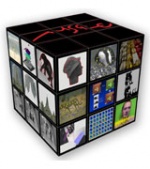 |
One important achievement of the Muscle group is the Muscle Network of Excellence, partially funded by the European Commission (FP6-507752, 1 March 2004 - 29 February 2008), managed by ERCIM and coordinated by Eric Pauwels (CWI, NL) and Nozha Boujemaa (INRIA, F) |
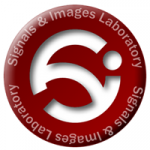 |
The Signal & Images Lab at ISTI-CNR (SI Lab) is working in the fields of signal processing, image understanding and artificial vision. Sensorial information is increasing its importance in both our everyday lives and the most advanced technological and scientific contexts. In particular, visual and audio information is becoming the most significant part of the global information to be processed, understood and manipulated. Our general goal is to increase the knowledge in signal processing, image understanding and artificial vision. This will be achieved by studying and developing models, methods and machines for the formation, processing, analysis and recognition of images and signals, and by applying them to several areas of scientific and technological interest. |
 |
The AYIN project-team (Ayin) is located at INRIA Sophia-Antipolis Méditerranée and aims to provide image processing tools to aid in the solution of problems arising in a wide range of concrete applications in Earth observation and cartography, for example cartographic updating, land management, and agriculture, while at the same time advancing the state of the art in the image processing methods used to construct those tools. An important recent theme, for example, is the incorporation of geometric information into stochastic and variational techniques, in the probabilistic case via the use of stochastic geometry, and in the variational case via the use of higher-order active contours. |
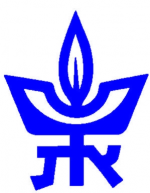 |
TAU-VISUAL at Tel Aviv University specializes in the extraction and processing of visual information from video and still images. The group has substantial expertise in the use of variational methods to solve fundamentally difficult problems, such as restoration, registration and segmentation of images and video. Typical application domains include medical image analysis, image retrieval, video analytics, environmental monitoring and 3D image acquisition. |
 |
The Computer Vision and Multimedia Laboratory (CVML ) of the University of Geneva is divided into three groups and carries out research in multimedia data processing, multimedia data management and security, as well as in multimodal human-machine interaction. Content-based Visual Indexing and Retrievalgroup: evelops strategies for the efficient indexing retrieval and exploration of large multimedia databases. Stochastic Information Processing group: studies various aspects of information theory and statistical (stochastic) information analysis and processing. Multimodal Interaction group: studiesvarious forms of interaction between humans, computers, and environment. Some considered interaction modalities are haptic, auditory, and based on physiological signals. Current developments concern: affective state determination and emotion recognition and their use for affective computing, multimodal interaction, brain-computer interfaces, mobility aids for sight handicapped people,object identification and authentication based on unclonable object features in large nonstructured databases, indexing and retrieval in very large multimedia databases, privacy preserving search, indexing and multiclass classification. |
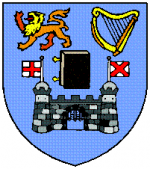 |
The School of Computer Science and Statistics in Trinity College Dublin has two collaborating groups, GV2 and Statica, that carries out activities on multimedia data (e.g. images, video and sound), sensor network data (e.g. road trafic, communications networks, camera network, motion capture) and environmental data (e.g. weather). STATICA focuses on Bayesian inference to solve statistical problems that arise in computer science, information systems and telecommunications focusing on developing statistical techniques to analyse large and complex data. GV2, the Graphics Vision and Visualisation group, has expertises in computer graphics, computer vision and all aspects of visual computing. GV2 was formed in 2006 with the integration of two longstanding TCD research groups: the Image Synthesis Group [ISG], established in 1993, and the Computer Vision and Robotics Group [CVRG], which was established 1983. |
 |
ARMINES is a non-profit French association which acts as the industrial interface serving engineering schools. CMM is a joint research laboratory of ARMINES and MINES ParisTech. Since the CMM was founded in 1967, it has contributed to the growth and dissemination of the theoretical and algorithmic corpus of mathematical morphology, through a very broad field of applications, thereby providing a rich experimental terrain for the development of new concepts and tools. For 40 years now, the CMM has been developing a powerful theoretical framework for image processing, called Mathematical Morphology. The CMM has acquired a leading position in the fields of mathematical foundations of the theory, efficient algorithms design, resolution of applications involving image processing, development of multimedia applications, and specific hardware development. The CMM has capitalized its expertise through common software libraries, creating a synergy between all applications in which the CMM is involved. These libraries provide advanced tools for filtering, segmentation, feature extraction, hyper-spectral image analysis and 3D point cloud analysis. contact : Beatriz.Marcotegui@mines-paristech.fr |
 |
The research group "Visual Information Processing" consists of members of the University of Granada and the University of Jaén, from complementing fields as mathematics, statistics, computer science and physics, we carry out research on image restoration and enhancement, superresolution from compressed and uncompressed stills and video sequences, information retrieval from image and video databases, extraction of 3D information from video sequences for multimedia applications, tracking algorithms and optical flow, visual-statistical approach to multi-scale multiorientation representation models, computational photography, compressive sensing, active learning, fuzzy image processing, image classification and pattern recognition and multispectral image processing. |
 |
The Pattern Recognition department of the Institute of Information Theory and Automation of the Academy of Sciences of the Czech Republic is a basic research unit oriented to statistical model-based pattern recognition and computer vision areas. The department has achieved leading position in several areas of statistical pattern recognition, mainly in the physically correct modelling and recognition of visual surface properties and feature selection. The PR department consists of 12 staff members and 6 doctoral students. The department head is Prof. Ing. Haindl Michal, DrSc. |
 |
VTT, Technical Research Centre of Finland, is the biggest multi-technological applied research organisation in Northern Europe. With its staff of 3,100, its unique research facilities and extensive global co-operation networks, it provides leading-edge technology solutions and innovation services. VTT works to enhance its customers’ competitiveness and competence, creating the prerequisites for society’s sustainable development, employment and wellbeing. Augmented Reality (AR) is the technique of superimposing virtual objects in the user's view of the real world, providing a novel visualisation technology for a wide range of application. The Augmented Reality research group consists of two teams: 3D Tracking and Mixed Reality. Teams started working in the AR field in 2000 with the development of virtual advertisements for live TV broadcast. In the following years teams expanded their expertise to several application areas in ICT, media, industry and building & construction. The augmented reality research group has strong scientific competence and has participated in a number of EU projects relating the area, for example INMOVE, CADPIPE, MUSCLE NoE, INTUITION NoE, and the ongoing ITEA2 project ViCoMo. |
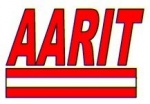 |
AARIT (Austrian Association for Research in IT) is Austria’s platform for IT-related research. AARIT’s members include universities, research institutes, industrial research labs as well as single researchers. AARIT represents Austria’s IT-related research in ERCIM, the European Consortium for Informatics and Mathematics. AARIT supports information technology and related disciplines through strengthening cooperation within Austria and between Austria and Europe. AARIT was founded in May 2001 and officially joined ERCIM in October 2001. Legally, AARIT is a non-profit association which is institutionally linked to the Austrian Computer Society (OCG – Österreichische Computergesellschaft). |
 |
The Image and Video Processing group at UPC is a research group located in Barcelona. Its main research activities focus on Image Analysis and Video Representation. Regarding analysis, the GPI specializes in basic tools for analysis such as nonlinear filtering, mathematical morphology, segmentation (with Binary Partition Trees), face detection and recognition, multiview analysis for stereo and 3D reconstruction, object tracking, body tracking, gesture analysis, emotion recognition and the modelling of human activity. The Group also develops biomedical, remote-sensing, watermarking applications and multimodal interfaces (Smart Rooms). GPI video compression activities have been the basis of applications related to content-based video coding, video indexing and the creation of tables of content and contributions to international standardization processes such as MPEG-4 and MPEG-7. Most recently GPI is conducting research in multi-view/3D representation and coding. |
| 150 px |
INESC TEC is involved in scientific research and technological development, advanced training, consulting and technology transfer. The main areas of activity are Telecommunications and Multimedia, Power Systems, Manufacturing Systems, Information and Computer Graphics Systems, Optoelectronics and Electronic Systems, Robotics and Intelligent Systems, Innovation and Technology Transfer. INESC TEC is involved in the ERCIM MUSCLE Working Group with a team that is leading research in multimedia information retrieval within the Information and Computer Graphics Systems unit. |
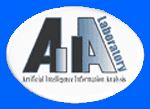 |
The Artificial Intelligence and Information Analysis (AIIA) Lab at the Department of Informatics, Aristotle University of Thessaloniki, Greece, has been working for more than 15 years in digital media and related areas. It has 5 faculty members, 15 researchers and PhD students. AIIA Lab has participated in more than 50 projects (40 competitive R&D projects and in 12 educational ones). It has taken part in 35 EU projects, most of which have been in FP5, 6 and 7. AIIA Lab was prime contractor in 3 such projects. AIIA Lab topics of interest span the areas of networked digital media, semantic and anthropocentric media analysis, computer vision, computational intelligence, digital image and video processing, human centred interfaces, IPR protection, computer graphics and visualization. Lab members have published more than 700 articles in international journals and conferences, 30 book chapters and 7 books. |
